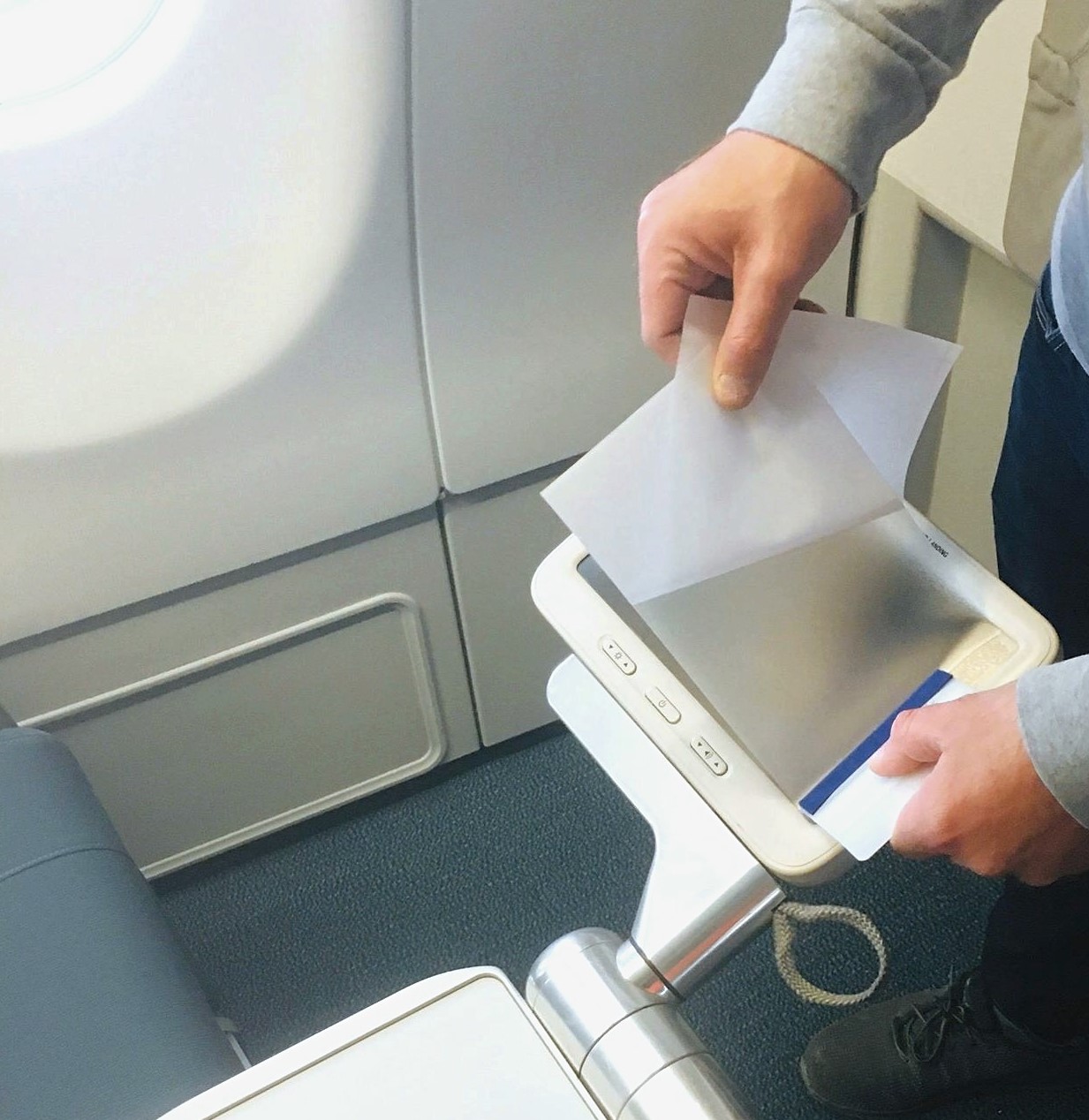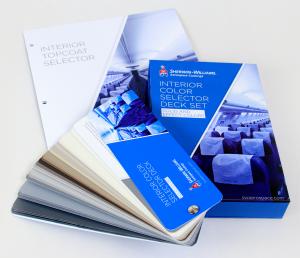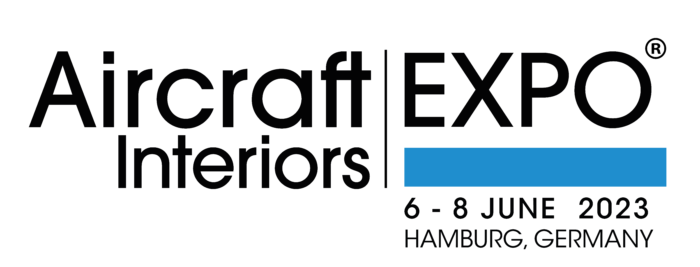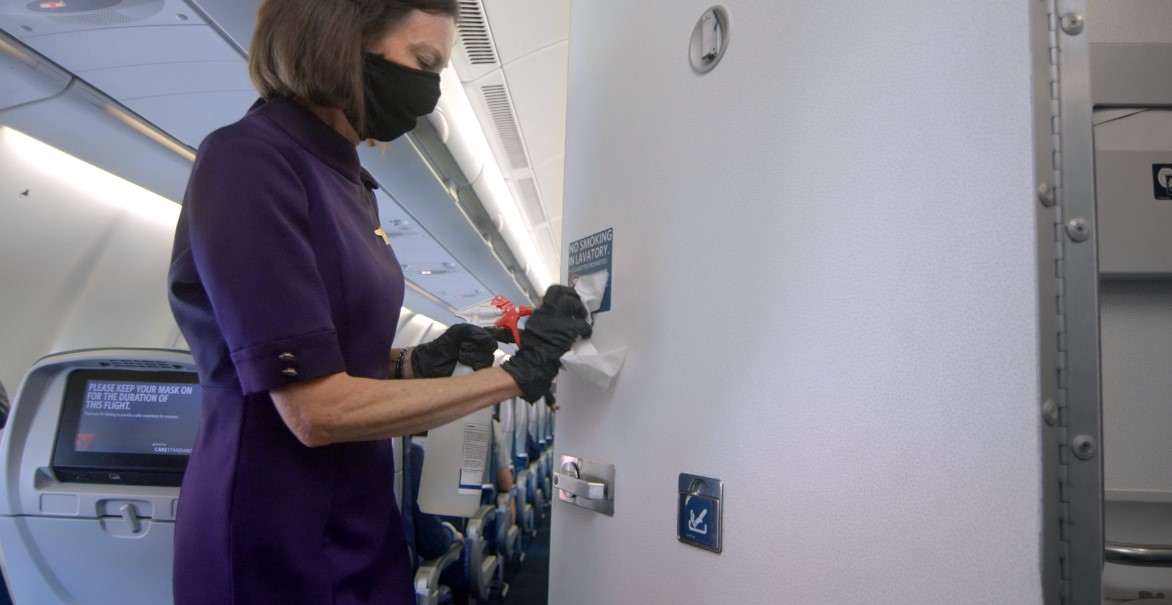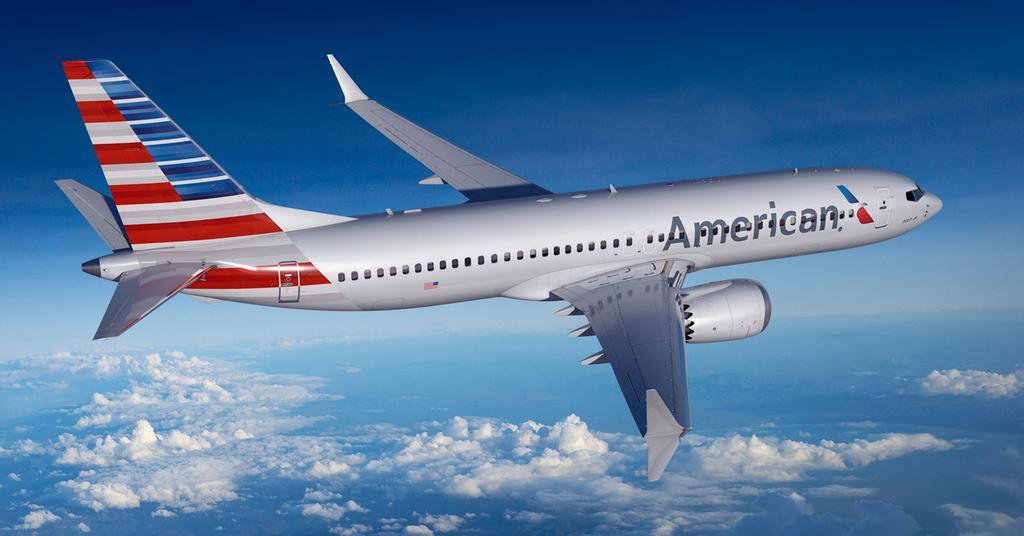Innovative, hard-wearing antimicrobial cabin coatings are essential for passenger well-being. Four industry suppliers are applying unique solutions to the challenge, as Paul Eden discovers
(Article source: https://www.aviationbusinessnews.com/cabin/paints-coatings-highlight-on-hygiene/ by Paul E Eden)
Price and inflight service were almost certainly key factors for passengers last summer. Now, on-board safety from infection transmission is more than likely the most significant driver in their decision-making process. Cabin cleaning and disinfection are more important than ever and, while specialist cleaning contractors are stepping up to the challenge, there is more to truly effective cabin hygiene than thorough cleaning after a flight.
Detergents and other chemicals inevitably test paints and coatings on cabin surfaces, while the physical wear and tear of cleaning also takes its toll. Add to this the anti-microbial qualities of some specialist coatings and the choice of surface finish takes on a new importance.
For the leading coatings manufacturers, German company Mankiewicz among them, this is no surprise. As director and head of aviation Andreas Ossenkopf says, “Our primary focus is on easy-to-clean, durable surfaces and our Alexit FST PureGuard and BioProtect coating systems contain active antimicrobial additives.”
The long-term antimicrobial effectiveness of the products has been proven by the JIS Z2801 test and they are OEM qualified or compliant with OEM standards. They have mainly been used in lavatories, but the OEMs are convinced of the benefits of their antimicrobial qualities and considering extending their application; they are equally suitable for general use on sidewalls and all plastic surfaces, for example.
Global marketing manager at Sherwin-Williams Aerospace Coatings Julie Voisin highlights some qualities that make the US company’s JetFlex product a favourite with aircraft OEMs. “It’s an extremely proven, hardy product that’s been used in aircraft cabins, galleys and lavatories for decades. Not only does it have excellent scratch-and-mar resistance, but also an extremely high level of chemical and stain resistance. It’s built to handle the extremes of the aircraft cabin.”
A timely acquisition
AkzoNobel acquired French aerospace coatings manufacturer Mapaero late last year, adding important cabin finishes to its portfolio at a crucial time. “The key addition is the Airbus-approved FR2-55 water-based interior cabin coating that complements our range of Intura film products,” explains global aerospace business director John Griffin. “Both lines possess very high resistance to cleaning with disinfectant, which will be a must as airlines put systematic disinfection between flights in place.”
Adhetec, another French company, specialises in self-adhesive cabin products, including signage and placards. It has seen increased demand for these as airlines do their best to communicate new instructions to passengers, as aerospace account manager for North Europe Nathalie Kujawa confirms.
“We’ve had requests for specific cabin signage, including a floor sticker asking passengers to respect one-metre social distancing regulations, sometimes with the addition of a QR code in the welcome area, highlighting that the airline has taken measures for passenger safety.
“We’ve been manufacturing placards and on-board advertising for a decade and our brand is recognised for its quality and robustness,” she adds. “Since we’re a Part 21G organisation, we can also release certificates, including EASA form one.”
Adherence to regulatory standards
Adhetec is unusual among manufacturers in being able to supply an off-the-shelf range and also products on demand. For companies producing coatings systems, the challenge is perhaps not so much satisfying requirements for hard-wearing, antimicrobial products, since these are already on the market. Instead, it’s more about enabling whole cabin hygiene while adhering to regulatory standards.
“Our aerospace cabin branch is facing a challenge to ensure passengers can travel safely according to the highest safety requirements,” says AkzoNobel’s John Griffin. “This is in addition to the fact that airlines travel to a large variety of countries governed by local legislation, especially for biocide regulations.
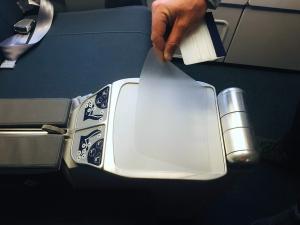
“Our research laboratories are working on innovative solutions in liquid and film that will combine fire retardance and chemical resistance with antibacterial and antivirus effects, while complying with all application regulations.”
Nathalie Kujawa talks us through Adhetec’s efforts to advance its existing technology. “We developed a product for tray tables to carry advertising and branding. Now we’ve partnered with Pylote to create a range of antiviral and antibacterial films for frequent touchpoints. This unique technology kills more than 90 per cent of bacteria and viruses in one hour and more than 99.9 per cent in a few hours.
“The material is biocompatible, FDA-approved and harmless to the skin. And, unlike many other antimicrobial alternatives, it does not release volatiles or molecules into the air. We’ve had its certificates for effectiveness against bacteria and coronavirus certified.”
Perceived hygiene
Over at Mankiewicz, Andreas Ossenkopf recognises two important aspects to whole cabin hygiene and passenger well-being: “The first is ‘real’ hygiene, the second ‘perceived’ hygiene.” Coatings with active antimicrobial additives contribute to real hygiene, but the appearance of being hygienic also plays an important role, notes Ossenkopf.
“Does the cabin have a smell? Do its surfaces look dirty or scruffy? Are there stubborn stains on the tray table? If ‘yes’ is the answer to any of these questions, the passenger will undoubtedly perceive the cabin as dirty and unhygienic.
“This is why it is essential that painted surfaces are extremely durable and easy to clean. The agents used are highly effective against microorganisms and dirt, but also act aggressively towards painted surfaces. We’ve therefore always placed considerable importance on chemical resistance when developing products. Mankiewicz FST cabin interior paints are highly resistant to chemicals and remain in use for such a long time.”
With enhanced ambience in mind, Sherwin-Williams Aerospace recently introduced Jet Suede, a two-component urethane topcoat that looks and feels good. It delivers a textured surface that’s easily cleaned and is a cost-efficient alternative to leather and fabrics.
Voisin comments: “The product sits alongside JetFlex Elite, which offers colours responsive to LED lighting. These coatings create a subtle glow with highlights and coloured shadows not seen with other coatings.”
Ambience is key to comfort
The outlook is similar at AkzoNobel, where John Griffin says: “Cabin ambience is key to passengers’ comfort and trust. We’ve done a lot of work on colours, but lighting and painted surfaces also have a key role in enhancing light diffusion.
“We’ve developed a new-generation paint range with a very smooth texture; it’s been adopted by many OEMs as their standard finish. Meanwhile, our Intura soft-touch films provide a luxurious feel while still meeting stringent requirements for flame retardance, cleanability and chemical resistance.”
Given its slightly different portfolio, Adhetec approaches cabin ambience from another angle, but one nonetheless based, according to Nathalie Kujawa, on the belief that passenger experience begins with feeling good. “It’s the feelings you have on a journey that make you want to travel again. Of course, Covid-19 has changed how we travel, and our perception of hygiene, yet it is possible to combine a design promoting a favourable ambience with safety.
“On that basis, we’re adding Adheskin decorative foil to our laminate range. It uses Pylote’s antimicrobial technology and satisfies requirements for aesthetics, personalisation, design versatility and safety.”
Changing expectations
Kujawa hints at the changing expectations of an emerging market where the traditional values of passenger experience remain, but with the critical addition of enhanced hygiene. AkzoNobel is observing a similar trend and is also not alone in subjecting existing products to enhanced testing in light of Covid-19.
“Since March, our liquid cabin range has been laboratory tested under harsher conditions than normal,” asserts Griffin.
Looking ahead, he echoes the industry’s sentiment. “The OEMs and equipment manufacturers are expecting a lot. In the short term this means coated surfaces will have to resist regular cleaning, retaining their appearance.
“In the medium term, it is probable that all cabin surfaces will need to demonstrate enhanced ‘hygiene performance’, but the new materials and additives required to achieve this will need to be qualified to aviation requirements and that will take time.”


